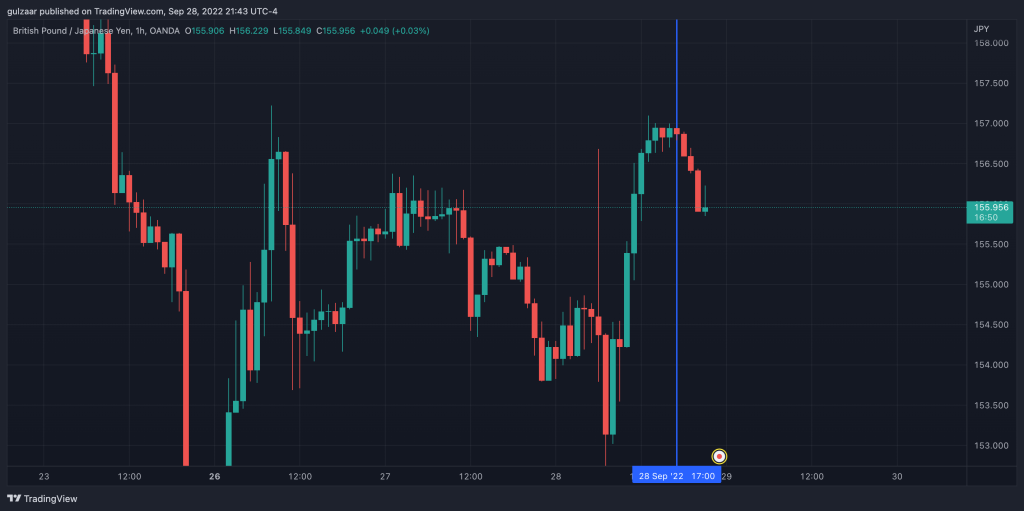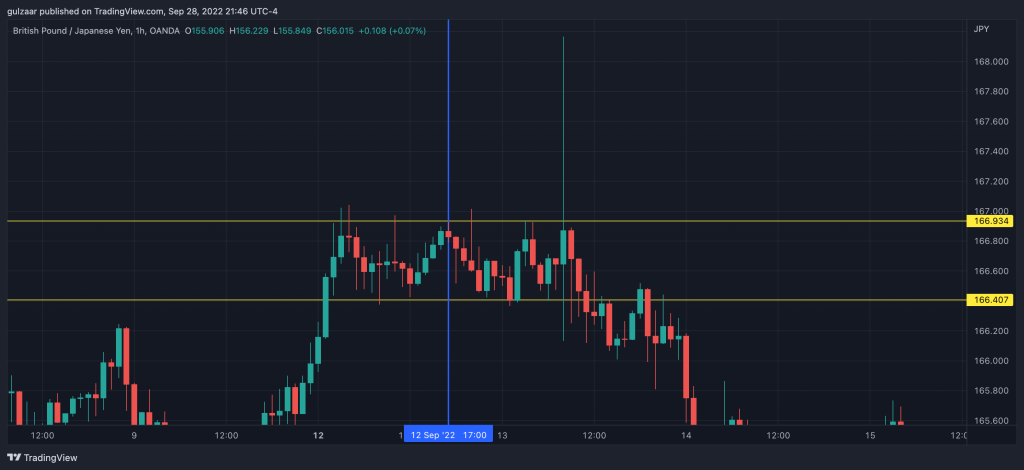The Asian session is an important time for forex trading. With activity in Japan, Hong Kong, New Zealand, and Australia, there are plenty of opportunities to make profitable trades.
However, not all forex pairs are created equal. In this blog post, we’ll take a look at the best forex pairs to trade during the Asian session.
Yen Crosses
The yen crosses – EUR/JPY, GBP/JPY, AUD/JPY, USD/JPY, CHF/JPY, and CAD/JPY – are some of the best pairs to trade during the Asian session.
These pairs tend to be very volatile, providing ample opportunity for traders to make profits.
The added volatility means there are lots of pips for you to catch in each move. It’s not uncommon for a single GBP/JPY one hour candle to be 30 or 40 pips!
If your schedule allows you to primarily trade the Asian session, choose a Yen cross and start studying how it moves during the hours right after New York close(5:00 PM Eastern Time).
Not all Yen crosses are equal. AUD/JPY and GBP/JPY are the most volatile, and CHF/JPY and USD/JPY are comparatively docile.
So while a GBP/JPY candle can move 30-40 pips in an hour, a USD/JPY candle typically moves 15-20 pips in an hour.
AUD Pairs
Another good choice for trading during the Asian session are AUD pairs.
AUD pairs can be very volatile and provide ample opportunity for traders to profit from price movements.
The AUD/JPY is one of the most volatile Forex pairs in the market. If you prefer higher pip values and want to stick to USD pairs, the AUD/USD is the second-most volatile USD pair after the GBP/USD.
So if you are an Asian session trader and are looking to trade USD pairs, go for the AUD/USD. It’s more volatile than the EUR/USD, but not quite as volatile as the Yen crosses.
NZD Pairs
Finally, NZD pairs are also a good choice for trading during the Asian session. NZD pairs are not as volatile as their AUD cousins, but they’re closely correlated, so remember to watch both charts for added confirmations.
When is the Asia session?
The Asian session is the period of time when markets in Asia are open. It starts at around 11 pm GMT and goes through until 8 am GMT. Typically, the most volatile period is at the start of the Tokyo session. That’s when you’re likely to see the biggest moves.
Why is it important to know about the Asian Session?
If you’re looking to trade forex, it’s important to be aware of all the different sessions. Each session has its own characteristics that can impact your trading strategy. The Asian session is no different – understanding how it works will help you make better trading decisions.
How to trade the Asian Session?
There are a few things you need to keep in mind if you’re looking to trade during the Asian session. Firstly, watch for a big move towards the start of Tokyo – that’s when you’re likely to see the most activity.
Secondly, be careful trying to trade after the move has happened as markets can start ranging.
Asia sometimes corrects the previous day’s New York move, or consolidates in anticipation for continuation during London.
Strategy 1: New York Correction

If the previous day’s New York session had a strong move in one direction, there’s a good chance that the Asian session will correct part of the move to set up a lower price for London traders to start buying again.
Stick to higher timeframes like the 30 minute or the 1 hour and sit on the charts after New York close to see how the candles print.
You’ll want to identify areas of strong support and resistance that were relevant in the previous New York session.
Then, you just have to wait and see how price behaves at those levels.
For example, if the New York session pushed price up and then created an area of support, watch the early hours of the Asian session to see if that support breaks.
If it does, you can potentially grab some pips as part of the larger correction.
Similarly, if the New York session pushed price down and then created an area of resistance, watch the resistance to see if it breaks. If it does, you can try to catch some pips there.
Strategy 2: New York Continuation

Sometimes, the overall momentum of the market is so strong that there won’t be any pullback. Instead, price will just consolidate for some time before continuing the New York move.
When you open the charts, they’ll look very similar to what you’d expect to see in a New York Correction move.
Except now, instead of breaking out in the opposite direction, price just takes a short breather in the late hours of the New York session/early hours of the Asian session before continuing its push up or down.
The only way to know whether price continues or reverses is to wait and see how the candles print.
Look for candles to close on higher timeframes like the one hour and 30 minute for stronger confirmations.
Many times, you’ll see the 15 minute candle break out of a range only to close back inside it and the next one reverses.
On the 30 minute, this would look like a big rejection wick.
Strategy 3: Consolidation Range

The third strategy you can use to trade the Asian session is when price is ranging. The Asian session won’t always correct or continue the previous day’s move.
Sometimes, price will just consolidate between two areas.
In my experience, ranges are the hardest to trade because they’re often very tight with few pips to catch in between, and there’s no guarantee that a range’s high or low will be respected.
So if you place a trade right when price touches the high or low, it’s difficult to place stop losses.
I personally have never had much success trading ranges, and after losing a TON of money trying to do so, I’ve learned to just take a break whenever the market is ranging.
Still, some traders excel at range trading and if that’s you, go for it.
Volatility in the Asian session
Compared to the New York and London sessions, the Asian session usually has much less volatility.
I like to trade the GBP/JPY and Gold, and most of the time, the entire Asian session move on either pair is about 30-40 pips.
Once price has gone those 30-40 pips, it tends to consolidate. So if you open the charts and see that price has already moved a bit from the open of the Asian session, you’ve missed the opportunity and you should wait for London or try again the next day.
In rare cases when there is a lot of market uncertainty(such as the pandemic, the Russian invasion of Ukraine, or the inflation crisis in late 2022), even Asia will move 80+ pips.
These are exceptions, though, and not the norm.
Conclusion
The Asian session is an important time for forex trading. With so much activity taking place in Japan, Hong Kong, New Zealand, and Australia, there are plenty of opportunities to make profitable trades. However, not all forex pairs are created equal.
In this blog post, we’ve taken a look at the best forex pairs to trade during the Asian session. Yen crosses, AUD pairs, and NZD pairs are all good choices for those looking to capitalize on volatile price movements and profit from price movements in the early hours of Tokyo trading.
